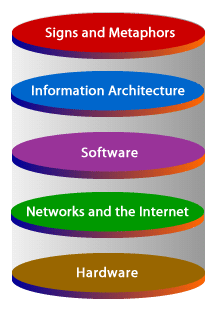Web Model Components

Website Components
A website is an integration of three components, the content to be published on the Web, its presentation to the user, and the underlying programming logic. Each component
has its own particular representation and role in shaping the overall user experience.
Content
The content consists of all relevant data that are to be published, or shown to the user. It usually constitutes the bulk of a website's storage requirements and can be in the form of text, images, binary and multimedia data, etc.
Static textual and graphic content can be stored as HTML pages, whereas multimedia files like videos and sound recordings are usually stored in large databases and served, in whole or in parts, by dedicated servers.
Presentation
The presentation component involves the user interface to theWeb site and the manner in which content is displayed.
Typical elements include the graphical and structural layout of aWeb document or page, text and graphic styles to highlight particular content portions, and a mechanism for the user to navigate the Web site.
Originally, files with HTML markups were used to store both content and information regarding its presentation. It is now common practice to store neither exclusively in HTML.
HTML is primarily used to describe the structure of a Web document, by breaking down the page into distinct elements like paragraphs, headings, tables, etc. The actual textual content of the document can be stored separately in a database,
to be dynamically inserted into the HTML page using programming logic. A separate file, called the style sheet, can be associated with the HTML page, and consequently the content, to affect the presentation. A style sheet file can describe how each structural element in an HTML file is displayed; sizes, colors, positions of fonts, blocks, backgrounds, etc., are all specified in a hierarchical organization, using the standardWeb-based style sheet language, cascading style sheets (CSS).
Logic
The programming logic determines which content to display, processes information entered by the user, and generates new data. It drives the interaction between the Web site and the user and is the glue that binds the content and its presentation. To be useful, it needs to access the content as well as its presentation information and handle user input accordingly. Logic is usually implemented as small programs, or scripts, that are executed on the Web server or the user's browser. These scripts can be stored within theHTMLpage, along with the presentation and content, or separately as distinct program files that are associated with the content. There are several standard programming languages that can be used in writing scripts.